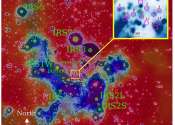On the hunt for primordial black holes
The theory that dark matter could be made of primordial black holes a fraction of a millimeter in size has been ruled out by a team of researchers led by the Kavli Institute for the Physics and Mathematics of the Universe ...









